
In photos: The ancient Roman baths of Bath, England
Ancient Roman Baths England
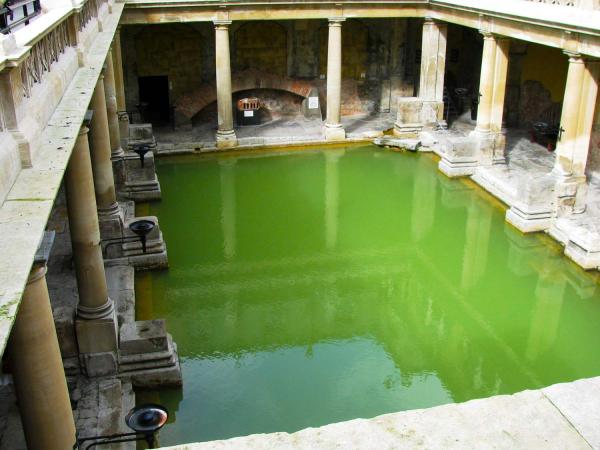
In southwestern England there is a natural site that was once ruled by an Iron Age people known as the Dobunni. Here is found the only hot water springs in England, bringing mineral-laden water from the depths of the earth. The religious class of the Celtic Druids thought this site to be sacred to the goddess Sulis and that it was a special place where men could communicate with the underworld.
Ancient Roman Baths England
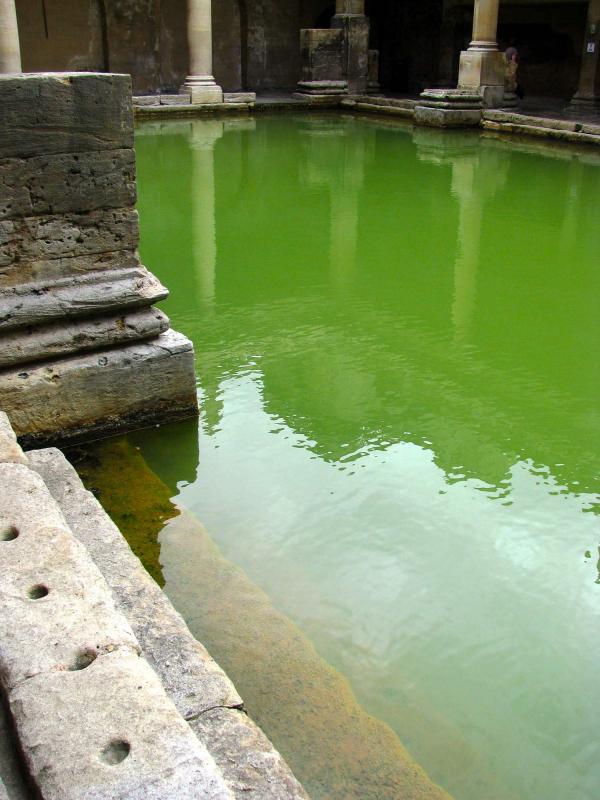
When the Roman Legion arrived here in A.D. 43 they immediately recognized the significance of the site. After a regional revolt was forcefully put down in A.D. 60, the Romans began to turn the natural springs into spectacular sacred baths. The hot springs had to be controlled so Roman engineers began the placement of oak piles driven deep into the mud while lead pipes directed the sacred water into a 6-foot (2-meter) deep lead sheet-lined reservoir. Bathers would enter the sacred water by four steep steps that surrounded the entire bath.
Ancient Roman Baths England
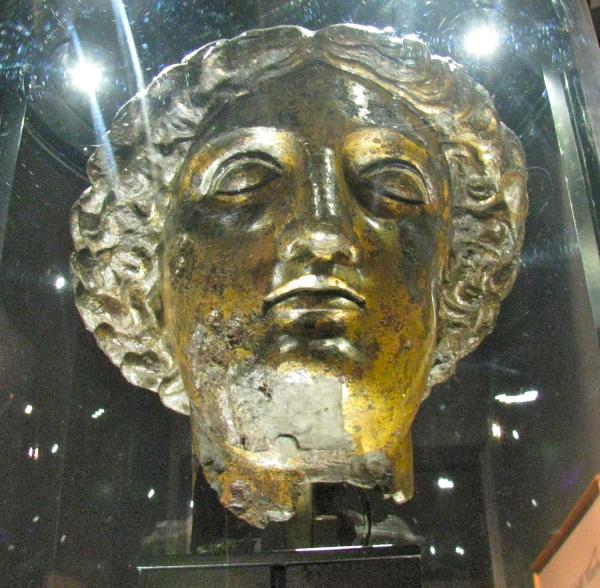
The Romans were sensitive to the local gods and goddesses of the people that they conquered, and they decided that the goddess Sulis was truly another manifestation of the Roman goddess Minerva (herself equated to the Greek goddess Athena). They designed and built The Temple of Sulis Minerva over the sacred water by the end of the first century.
Ancient Roman Baths England

The powerful face of Gorgan greeted bathers from the top of the temple pediment and reminded all citizens who came to the baths of Minerva's military power and wisdom.
Ancient Roman Baths England
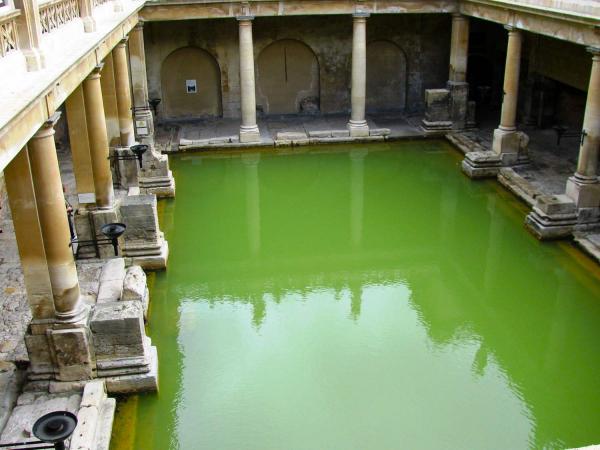
The sacred water that still flow into the baths today once fell as rain in a nearby region known as Mendip Hills hundreds or even thousands of years ago. Slowly it percolated down through the layers of limestone to a depth of over 3 miles (5 km) where the Earth's natural heat warms the water to between 147 and 205 degrees Fahrenheit (64 and 96 degrees Celsius).
Ancient Roman Baths England
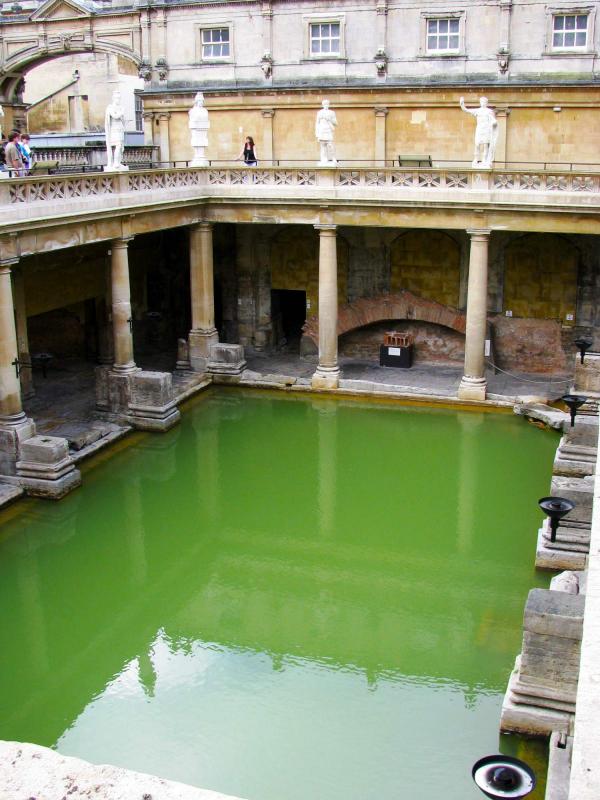
Under great pressure, the heated water rises along faults and fissures back up through the ancient limestone and gushes to the surface as it has for over two thousand years. Here the Druids first worshiped the goddess Sulis, the Romans once built the Temple of Sulis Minerva and the modern City of Bath, England is now found.
Ancient Roman Baths England
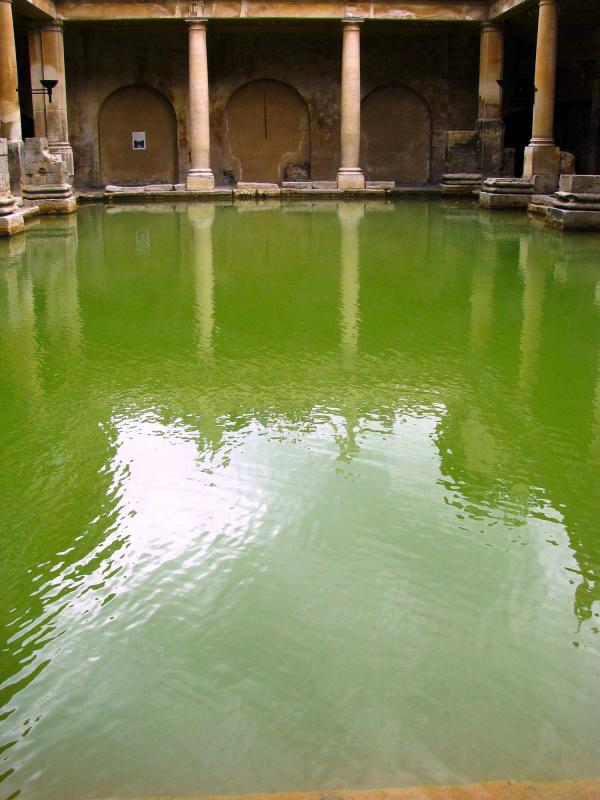
By the time the sacred water reaches the surface, it has cooled to a constant 115 F (46 C). Over 250,000 gallons (1,100,000 liters) of hot water have flowed from these natural springs each and every day for centuries.
Sign up for the Live Science daily newsletter now
Get the world’s most fascinating discoveries delivered straight to your inbox.
Ancient Roman Baths England
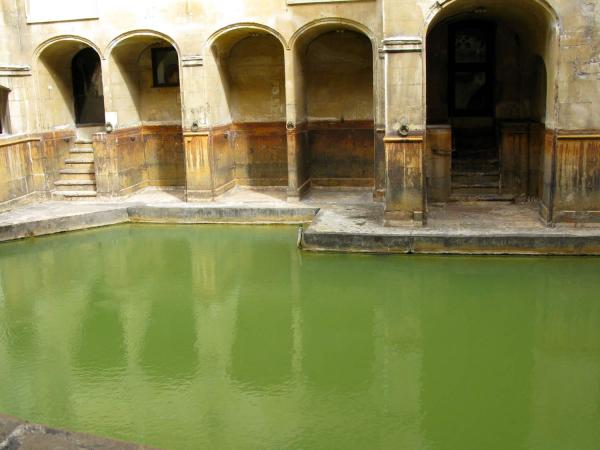
The water is colorless, but what is seen today at the baths is very green because of the algae growth that is stimulated by the heat and sunshine. Water from the baths is not recommended for drinking or bathing since it still flows through the lead pipes laid down so many years ago by the Romans. Drinkable spring water can be consumed today in the world famous Pump Room restaurant, which brings the mineral rich water from the same ancient springs to the restaurant from its deep, underground source through modern lead-free piping.
Ancient Roman Baths England
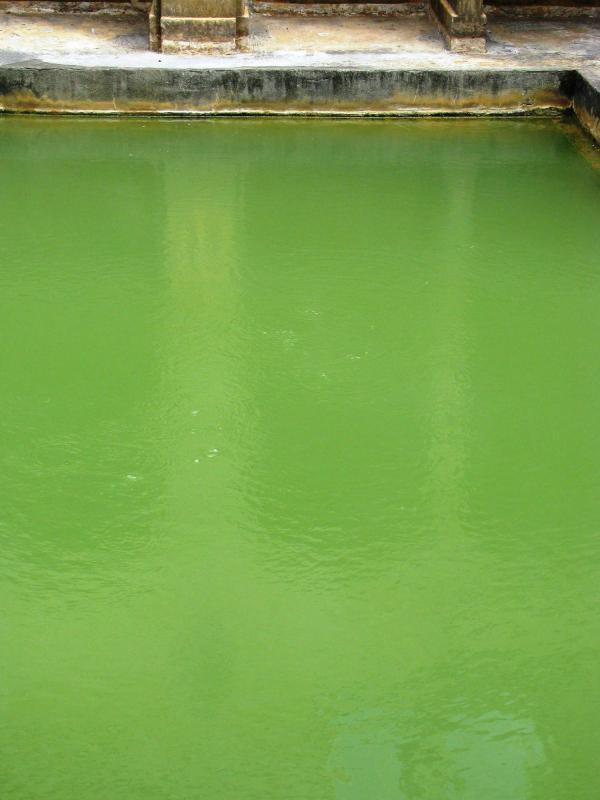
Forty-three different minerals are found dissolved in the water. Sulfate and calcium are the two main ingredients while chloride and sodium are also found in great abundance. There are very few dissolved metals found in the water with the exception of iron, which causes a distinct orange staining around the sacred pools. Exsolved gases cause a constant series of bubbles to rise and explode on the water's surface. In Roman times, the baths were enclosed in a beautiful temple with high, vaulted ceilings.
Ancient Roman Baths England
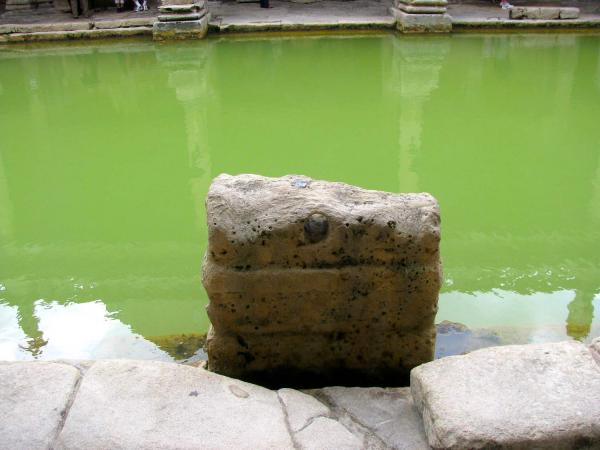
For over 300 years the hot water baths and The Temple of Sulis Minerva were a beacon of Roman culture and power in this corner of the ancient world. But late in the fourth century, raiding barbarians foretold the end of this part of the Roman Empire. Neglect and vandalism of the baths and the great temple became common and eventually The Temple of Sulis Minerva collapsed back into the mud of an ever-growing swamp.
Ancient Roman Baths England
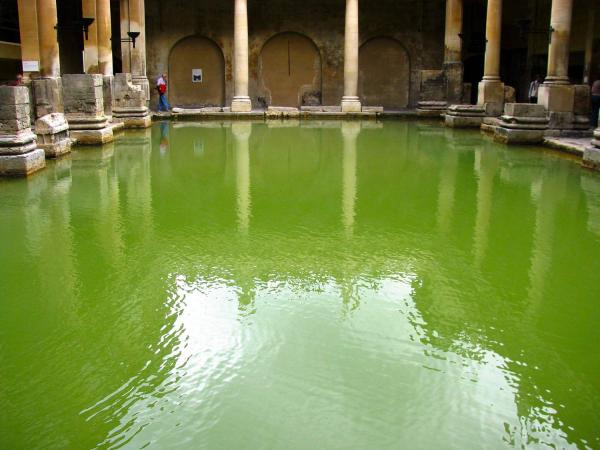
Late in the 19th Century the Roman Baths were rediscovered by English archeologists. At this time the ancient Roman baths were some 20 feet (6 m) below the street level of the new and ever growing City of Bath. But the significance of the discovery was never in doubt and plans for reconstruction began immediately.










